Bioengineering Demonstration and Education Project
The City of Calgary and The Government of Alberta have partnered to create a project that demonstrates how bioengineering can be used to improve fish habitat and stabilize erodible river banks.
Our goal is to increase awareness and understanding of how soil bioengineering structures are built, what benefits they can bring to our watershed, and how they might be used to mitigate the impacts of future flood events.
The Bioengineering Demonstration and Education Project has won the following awards:
- 2020 Association of Professional Engineers and Geoscientists of Alberta (APEGA) Summit Awards - Environment and Sustainability Award
- 2020 Consulting Engineers of Alberta (CEA) Award of Excellence in the Water Resources Category
- 2020 Consulting Engineers (CEA) of Alberta Award of Merit in the Sustainable Design Category (2020)
- 2018 City of Calgary “One City” award for the Environmental Category
To learn more about the project, click on the following links:
Project objectives
The key objectives of this project include the following:
- Re-establish fish habitat degraded by recent flood recovery activities at the project location on the Bow River using bioengineering techniques.
- Stabilize slopes and control bank erosion at the project location.
- Restore riparian health and related functions at the project location to improve watershed resiliency.
- Demonstrate a range of soil bioengineering techniques and their applicability to different site conditions.
- Increase understanding and support knowledge transfer, research and partnerships among The City, the Province, professional practitioners, industry, academia and the public about bioengineering practices and techniques
- Create an aesthetically pleasing river interface along the project area.
- Monitor, evaluate, and report on the effectiveness of the different bioengineering techniques used in the construction of the project
Visit the Bioengineering Demonstration and Education Project Site
Thanks to a partnership with the Government of Alberta, citizens are now able to enjoy a new interpretive pathway, benches and gathering spaces at the site, as well as scenic views of the Bow River from the viewing platforms on the new 17 Avenue BRT bridge.
The project is located on the bank of the Bow River between Pearce Estate Park and the Inglewood Bird Sanctuary.
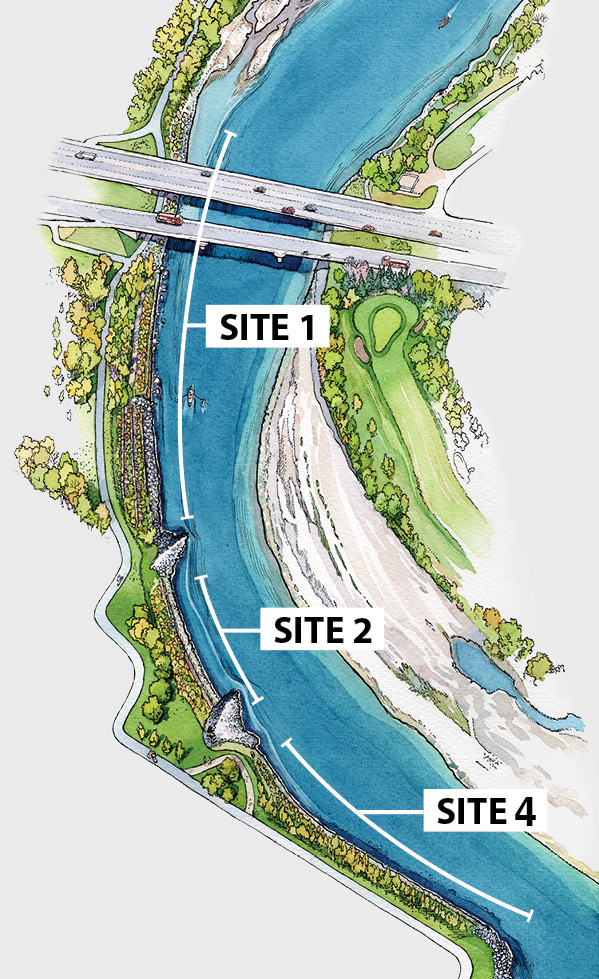
Questions?
Do you have questions about the project, monitoring results or bioengineering?
Contact 311 or fill out a form.
Project site - Summer 2021
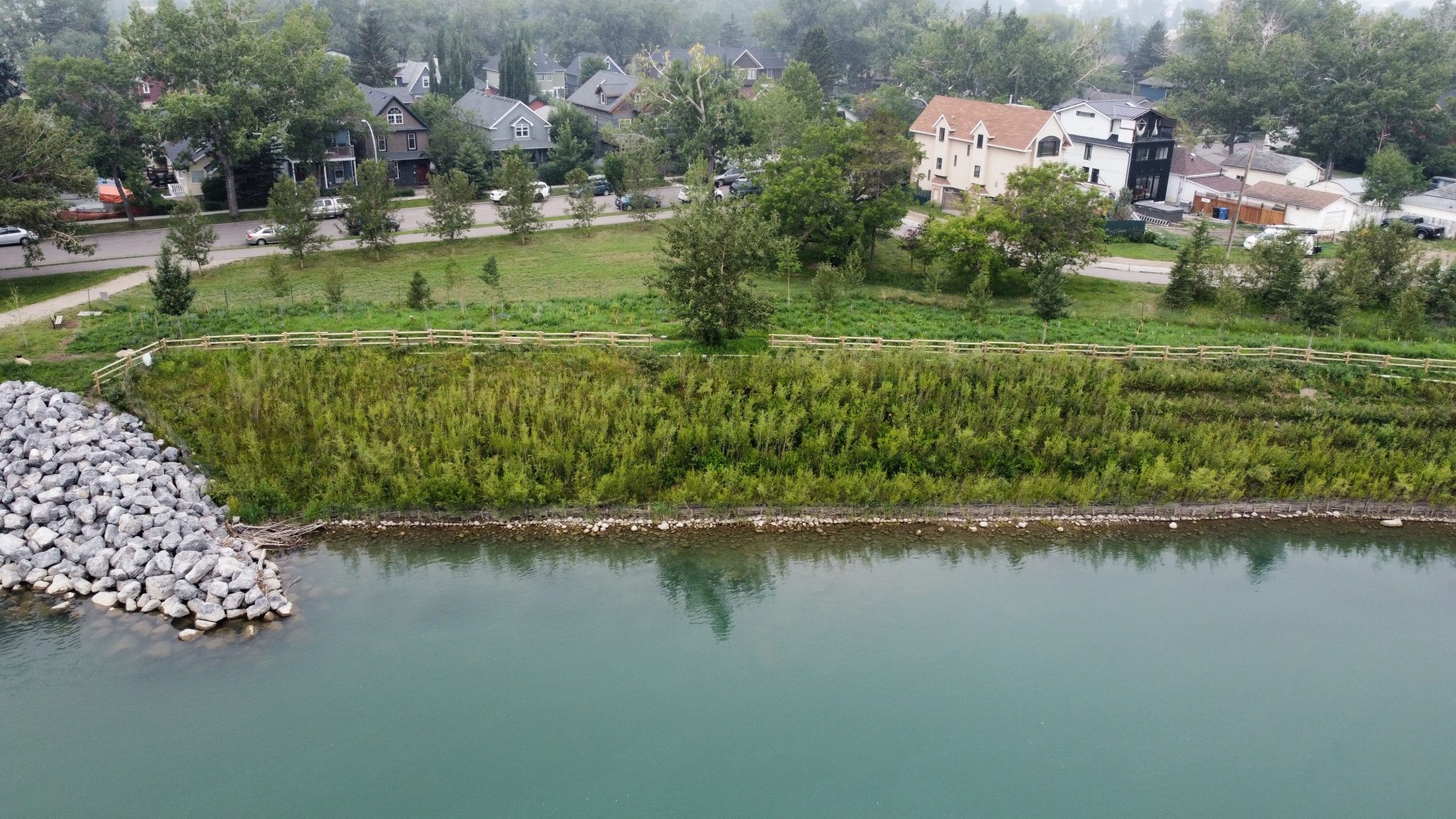
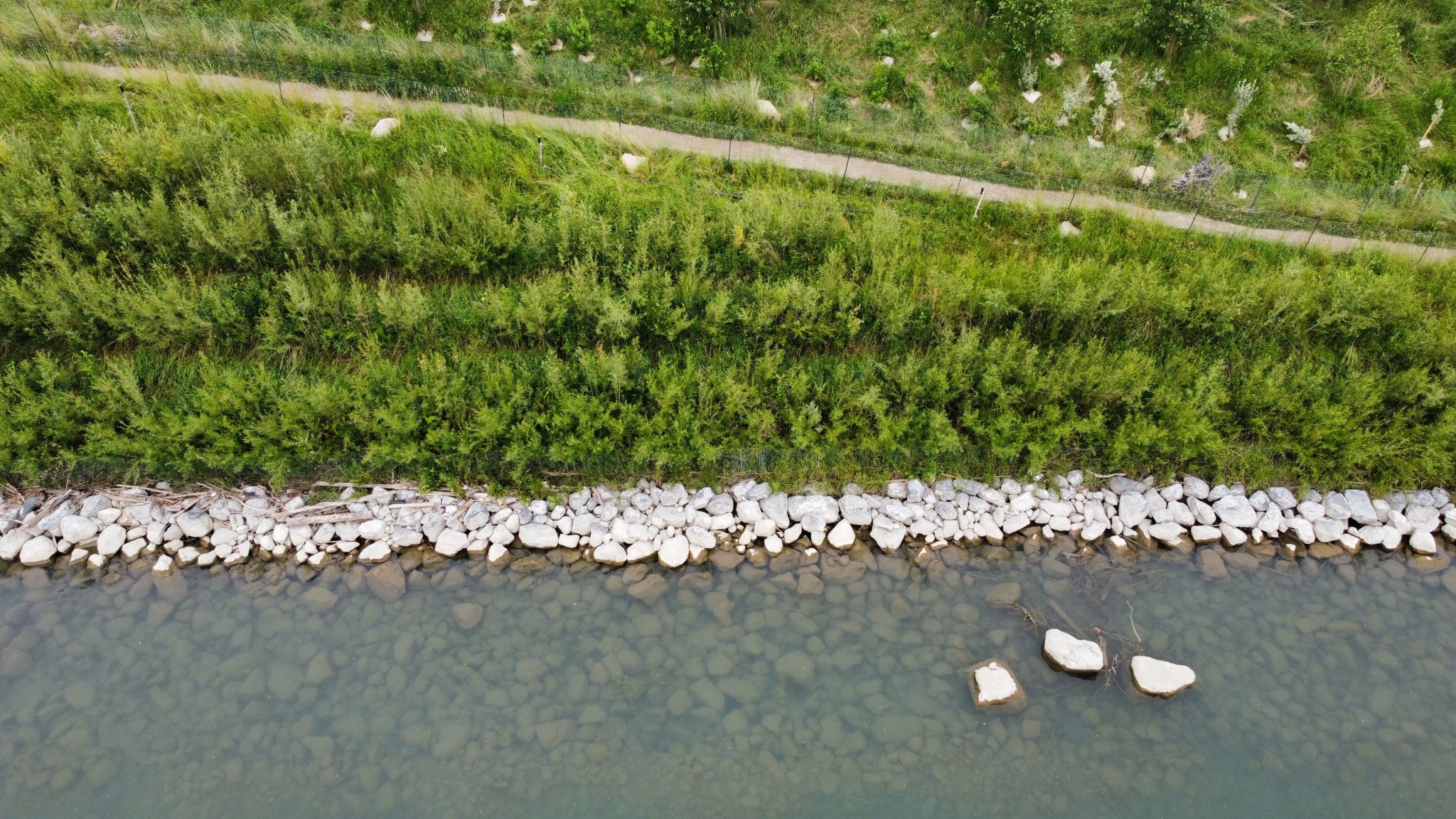
Photos by: Kerr Wood Leidal
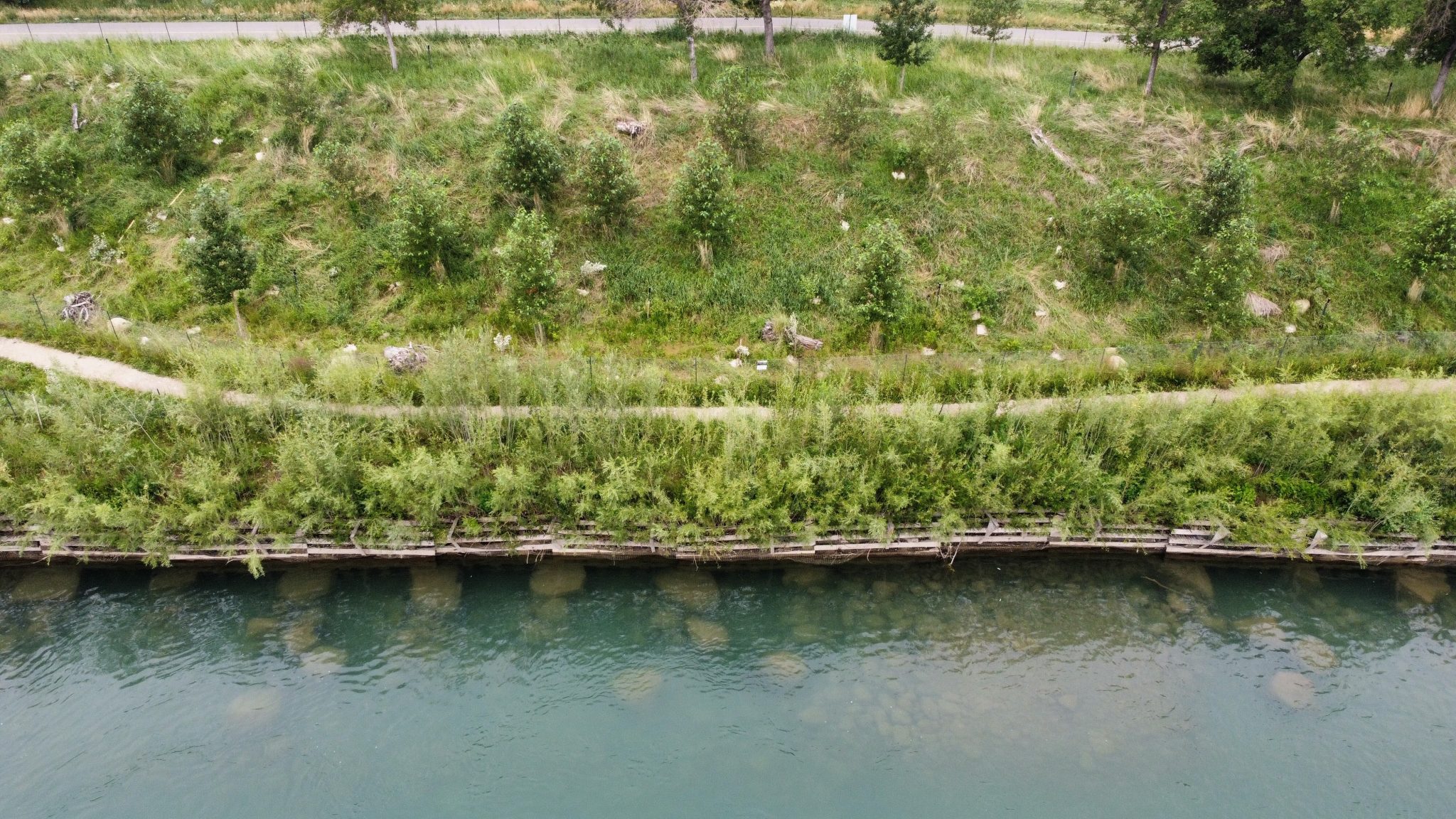

Introduction to bioengineering
What is bioengineering?
The City of Calgary and The Government of Alberta area are supporting and encouraging the adoption of bioengineering techniques to stabilize stream banks and restore riparian areas.
Bioengineering can be defined as:
The United States Department of Agriculture, Part 654, National Engineering Handbook, “Stream Restoration Design”, August 2007.“an approach incorporating living and non-living plant materials, in combination with natural and synthetic support materials for slope stabilization, erosion reduction, and vegetation establishment.”
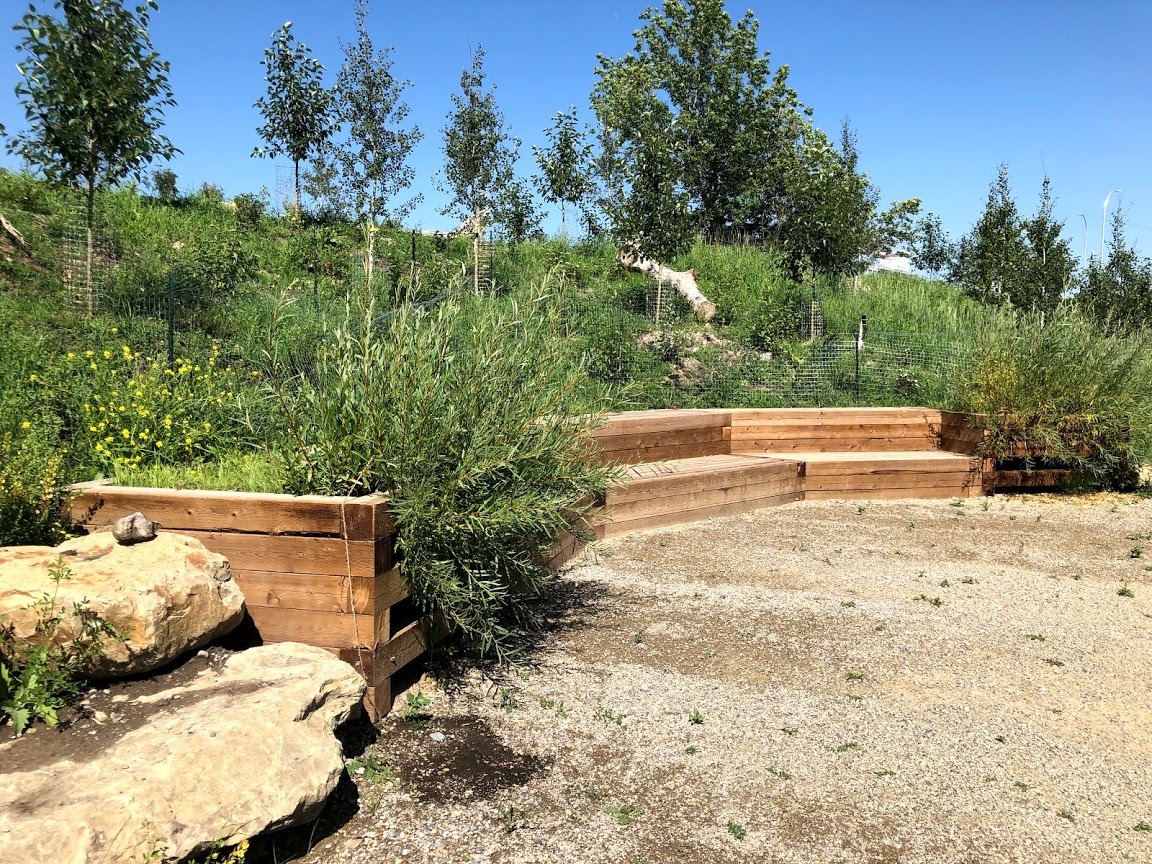
Gathering space located along the new nature trail.
How bioengineering works
Bioengineering is not a new practice; however, the incorporation of bioengineering technology into stream bank erosion protection or flood mitigation works has been limited in Alberta, until recently, due to factors such as a lack of familiarity with techniques, concerns about long term sustainability, cost, lack of available design and construction expertise and a lack of opportunity.
In Alberta, many native plants such as Balsam Poplar and several willow species can act as structural and mechanical elements to stabilize and naturally protect slopes. These plants can be easily obtained and propagated from cuttings or can be installed on-site as live stake, plugs, shrubs, or trees. Plant roots help to grab and hold soil, while the plant vegetation helps to slow the flow of water – a twofold approach preventing further bank erosion.
The advantage of using bioengineering techniques is that they achieve a number of bank stabilization goals while also creating critical fish and wildlife habitat and improving water quality.
Bioengineering techniques can be used for the following:
- Slope stabilization
- Erosion control
- Shoreline protection
- Surface protection
- Control of runoff
- Reestablishment of fish and wildlife habitat
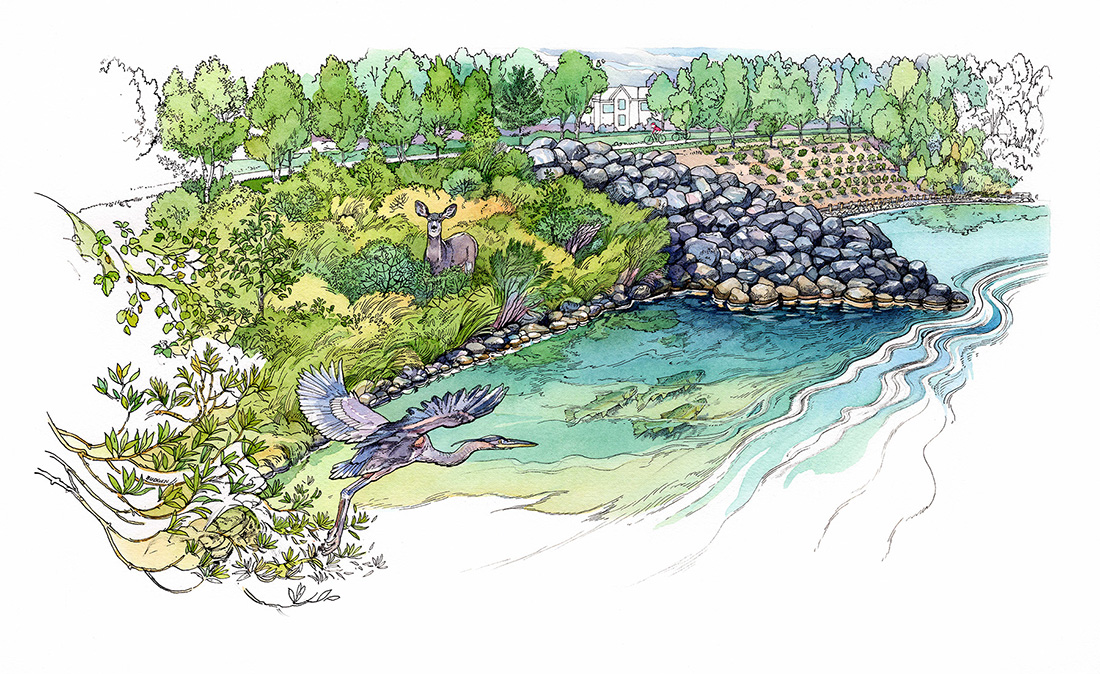
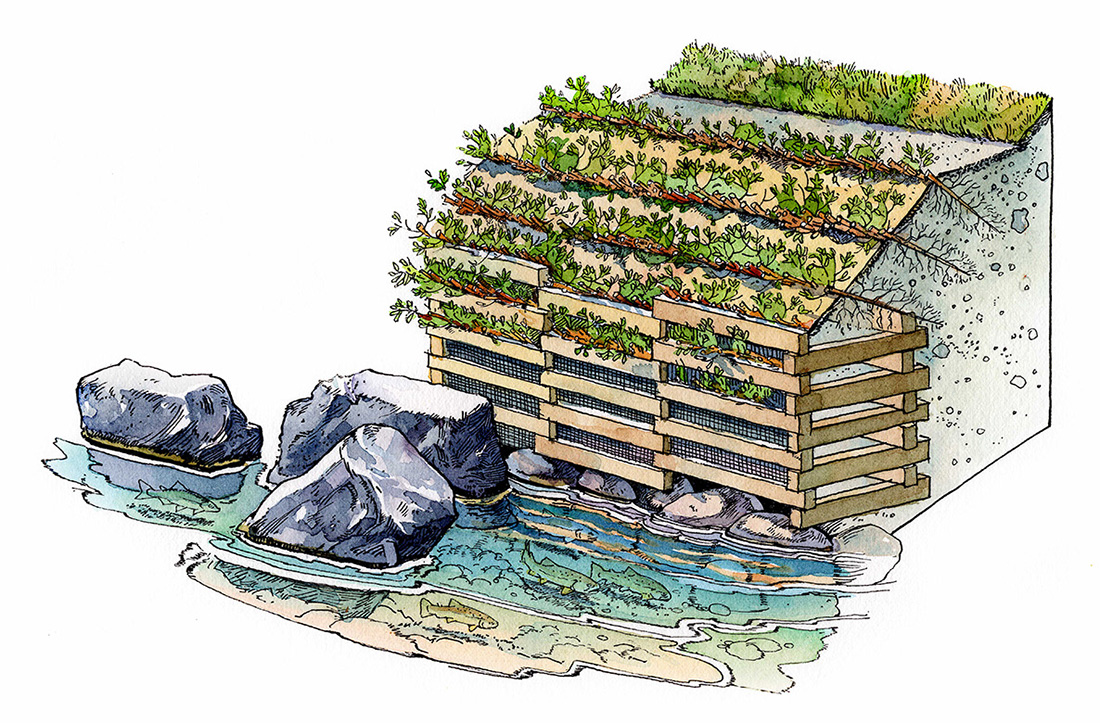
Illustrations of bioengineering techniques used at the site.
Considerations for bioengineering
Bioengineering is not always the answer for slope and erosion problems and is not appropriate for all situations. Some erosion stabilization projects constructed immediately after the June 2013 flood was driven by the need to protect critical infrastructure and typically applied classic “hard” engineering e.g. rip rap designs.
Riprap, placing large angular rocks along the shoreline to protect slopes from further erosion, was used after the 2013 flood to provide immediate bank protection. Bioengineering, which mimics the natural process by reestablishing vegetation to stabilize banks, requires several growing seasons to see the full benefits.
Proper maintenance and monitoring of plantings is key to the success of bioengineering projects. Once a restoration project is complete, it will need ongoing monitoring and attention for several years until plants become established.
Maintenance often includes frequent watering until plants are established and installation of temporary fencing to protect sites from wildlife damage, and weed control.
See how our friends at the Ghost Watershed Alliance are using bioengineering techniques to restore riparian areas in the Ghost Watershed:

